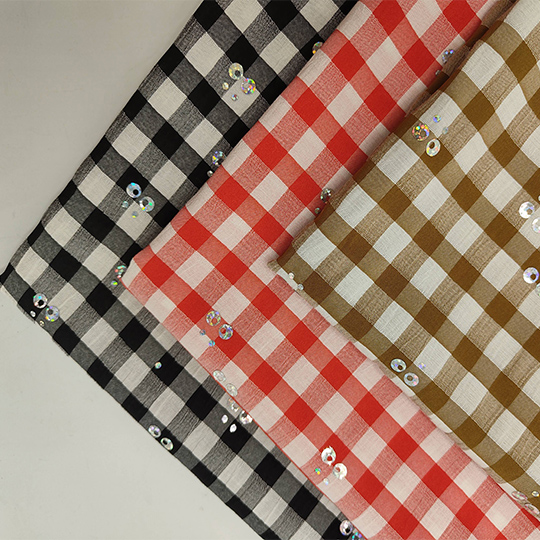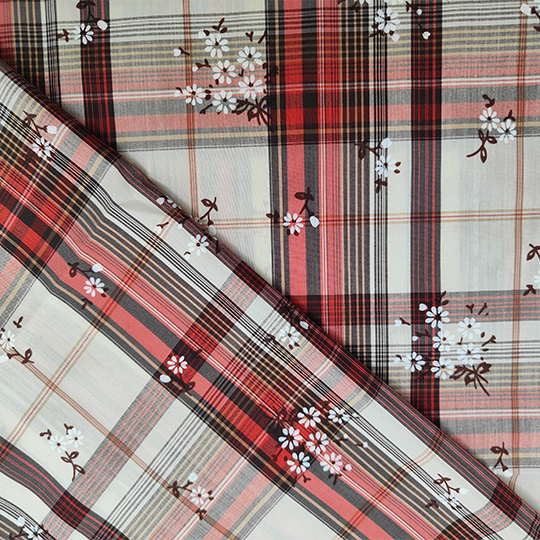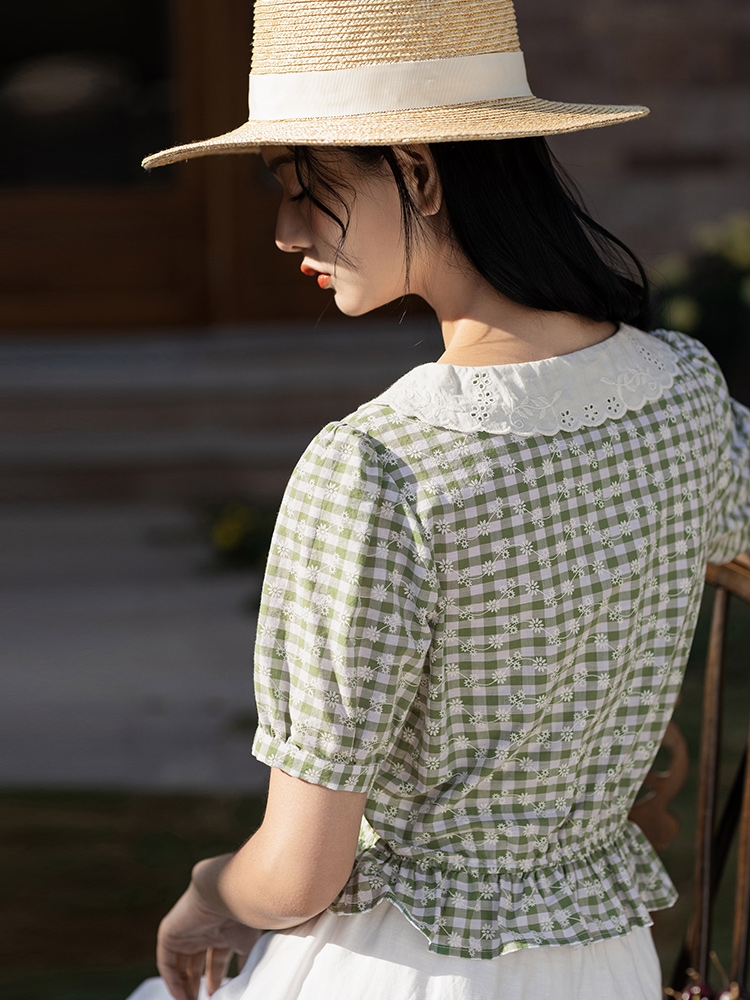Basic knowledge and maintenance of yarn-dyed fabrics
Fabric knowledge sharing--Basic knowledge and maintenance of yarn-dyed fabrics
Today I will take you to explore the advantages and disadvantages of yarn-dyed fabrics and the maintenance methods of yarn-dyed fabrics. Yarn-dyed fabrics are very common fabrics in our lives. Follow me today to learn about the characteristics of yarn-dyed fabrics!
Dyed fabrics have a long history, and this weaving method has long been adopted in the history of textiles in our country. Such as our country's color fabric variety Chaoyang grid. Dyed fabrics have many very traditional patterns, such as "Houndstooth", "Shepherd", "Scottish Grid", "Houndstooth" and other classic patterns. In modern textile design, the pattern design of dyed fabrics adopts new science and technology and introduces new single products.
The yarn-dyed cloth was called mottled cloth in ancient times, which is the development of plain weave natural color cotton cloth. Various colored yarns are used alternately in warp and weft to weave different sliver or plaid cotton cloth forms. Those with black and white stripes are called "Wuyu"; those with black and white checkered patterns are called "Wenhu";
In 1958, in Khotan, Xinjiang, unearthed from the ruins of the Northern and Southern Dynasties (420-589) in Yulaike, a piece of cloth used by merchants for clothing was woven into a square pattern with natural color and blue cotton yarn, and the warp density was 25 / cm, the weft density is 12 threads/cm. At that time, the cotton cloth of the Li nationality on Hainan Island was "interspersed with five colors". It shows that the yarn-dyed fabrics produced by ethnic minorities in China at that time were very common in which colored yarns and natural-colored yarns was woven into stripes or grid patterns.
To add color, the method of interweaving silk and cotton yarn is also used to produce jacquard fabric. For example, the geometric brocade unearthed from the 6th-century tomb in Astana, Turpan in 1960, is made of natural-colored cotton yarn and blue silk thread interwoven with geometric pattern jacquard cloth. It can be seen that before the Song Dynasty, there were many kinds of cotton cloth produced by ethnic minorities, such as printed cloth, striped cloth, and plaid cloth, and jacquard technology had been adopted.
The industrial production of yarn-dyed fabric originated in Europe in the first half of the 19th century. Later, due to the impact of production costs, the industry shifted, European countries gradually withdrew from this field, and Asia became the main base for the production of yarn-dyed fabrics. The origins of yarn-dyed fabric production in Asia are in Japan and Taiwan.

It refers to dyeing the yarn or filament first, then using the dyed yarn for weaving. Different from the printing and dyeing method of printing and dyeing the woven fabric, the dyed yarn is dyed first, and then the colored yarn is used for weaving, which has a unique style. The colors of yarn-dyed fabrics are mostly bright, and the patterns are also distinguished by color contrast.
Full-dyed and half-dyed
Full-color weaving: There are dyed or partially dyed yarns in both warp and weft (or there are several colored yarns interlaced with white yarns in the fabric).
Semi-dyed yarn: the warp or weft yarn is dyed or partially dyed, and the gray yarn cannot be used for weaving yarn-dyed fabrics, because the tension and shrinkage of the gray yarn are different from those of the dyed yarn, so it must not be used for warp yarn. The cloth surface will be deformed in the weft direction due to the shrinkage problem when used in the weft direction. Therefore, generally colorless yarns are semi-bleached or fully bleached.

What are the advantages of yarn-dyed fabrics:
1. Strong three-dimensional effect: Yarn-dyed fabrics use yarns of different colors to match the fabric structure to form various beautiful flower patterns, which have a three-dimensional effect than ordinary calico.
2. Good color fastness: Since the yarn-dyed fabric is dyed with raw yarn, the dye has strong permeability, so the color fastness is good.
3. Rich colors: Yarn-dyed fabrics are weaved by multi-shuttle and dobby weaving machines, which can interweave different fibers or yarn counts into varieties with rich colors and clever patterns.
4. Unique style: Since yarn-dyed fabrics use colored or fancy yarns and various weaves, they can be woven into beautiful and unique varieties.
What are the disadvantages of yarn-dyed fabrics:
Due to the high loss in yarn dyeing, weaving, finishing, and other processes, Taiwan's production is not as high as that of white gray cloth, so the input cost is high and the technical requirements are high.
The above is what I share with you, I hope this article can be helpful to you. Thank you for your attention and support.

